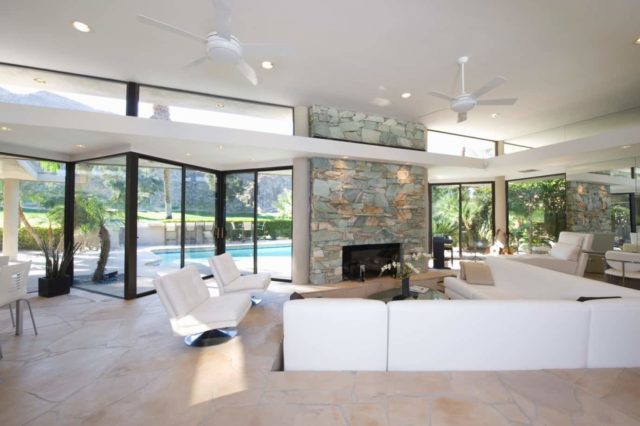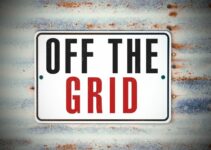While making home improvements of any kind, the number-one question on most homeowners’ minds is, “Will this help me save money”? Or, we often want to make certain changes, but think, “This will break by budget, I can’t afford this”. And, some of us think, “Will this be wasteful and hurt my surrounding”? With each new day, we are getting more aware of our environment and prefer to save money while being good to the planet where we can, when we can.
With an increasing focus on eco-friendly home design, most people also want to explore improvements that have a positive impact on the environment and their health, in addition to their wallet. And that is the way to go.
Well, energy-efficient improvements can be made with practically any budget if you plan them right. You don’t have to go all out with a complete home upgrade if you don’t have the money for it, but you can start making small changes that add up. Over time, the savings from each of these will make it all worthwhile!
Let’s look at some of the main changes you can make today, for a cleaner, healthier, and greener tomorrow.
Top 8 Upgrades for a Smarter, More Eco-Friendly Home
The “eco-friendly” or “green” design aims to help homeowners reduce energy bills, help the environment, and build a healthier living space. Here are some easy ways to bring elements of green design into your home:
1. Check for Leaks and Drafts
Almost every house has drafty doors and windows that let cold or hot air in, so your furnace or air conditioner has to work harder to maintain a comfortable temperature indoors. Of course, this means it’s using a lot more energy than it would if the air wasn’t escaping!
Test for leakage by turning off any fans or air conditioning and then holding a lit candle near draft-prone areas (such as door and window frames, baseboards, pipes, vents, etc.) If you locate any leaks, use weather stripping and caulk to seal them up. Also make sure that vents are the correct size for your home.
2. Invest in Roof Restoration
This may seem like a pricey upgrade, but it will pay for itself in terms of energy savings over the long run. In the summer months, it reduces the load on your cooling system, by preventing heat and warm air from entering your home. In winter, it helps keep your home warmer the same way.
Look for local contractors who offer roof restoration services, and can offer specific solutions for your home. For instance, older homes may have damp tiles. Waterproofing the tiles can keep the roof cavity warmer in winter, and heatproof coatings can make it cooler in the summer by reflecting heat away.
3. Seal and Insulate the Envelope
In addition to the roof, check and improve the rest of the exterior or “envelope” of your home. Start by air-sealing the exterior, i.e. weather-stripping doors and windows, and filling leaks in the attic, chimney, and basement, as well as around pipes, wiring, and fixtures.
After that, add at least 10 inches of insulation to the attic floor (to trap upward-moving heat inside the house). If your budget can stretch that far, also consider blowing insulation into the walls, especially if you live in a very cold area or are repainting/re-siding the house.
4. Seal and Insulate the Ducts
Most homes lose a lot of heated or cooled air through leaks in the ductwork, particularly near the basement, attic, and crawlspace. Sealing the joints/seams and adding insulation around the ducts could help you save up to 30% on your HVAC costs, but you should hire a professional for the job.
Insulation may also need to be filled in, and fiberglass insulation may need to be fluffed from time to time in order to create air pockets. If your contractor suggests replacing the fiberglass insulation in your home, get a second opinion. It really doesn’t require frequent replacement unless there’s water damage.
5. Upgrade Your Heating/Cooling
If you’re using an old boiler, furnace, or air conditioner, it’s likely to be using more energy than its newer counterparts. Investing in a new cooling or heating system could cut down your energy bills by up to 20% right away, and even more with energy-efficient units!
To maximize your energy savings, install a programmable thermostat as well. These smart devices cost as little as $60, but will cut down your energy consumption by at least another 10%. Higher-end models can turn on the heat or air conditioning at a certain time of day, or operated from anywhere through a smartphone.
6. Make the Most of Rebates
Look into the rebates offered by the government to homeowners making energy-efficient home upgrades. For instance, you can get up to $500 lifetime tax credit when you buy roofs, insulation, doors, and windows that come with a manufacturer’s credit certification statement (10% on each).
If you invest in alternative energy equipment (small wind energy systems, solar energy systems, fuel cells, geothermal heat pumps, etc.), up to 30% of the cost could come back to you as a tax credit. What’s more, there’s no upper limit to this rebate, and you can carry it forward to the next tax year.
7. Put in Solar Panels
Solar panels can cost a pretty penny, but they’re a great way to heat and cool your home using alternative energy. With government tax benefits, it’s becoming easier for homeowners to make the switch to solar energy, one step at a time.
Start small, if you can’t afford to redo the entire home energy system in one go. For instance, you could replace your outdoor lighting with solar lights, or get a solar water heater installed on the roof to cut down heating costs, without a very heavy investment.
8. Install New Windows
It may also be time to consider putting in new windows. This is quite a heavy investment and doesn’t really offer tremendous energy savings, but there are other benefits to consider (improved resale value, lower maintenance, and higher visual appeal).
Coupled with new insulation and appliances, as well as qualifying tax rebates, you could actually save in the long run. At least start looking at the options available, so you can plan for long-term upgrades in the years to come.
Bonus Tips – Be smarter about energy usage in your home, no matter how small. Over the holidays as well as the rest of the year, purchase eco-friendly home décor or handmade items instead of mass-produced ones. Keep seasonal décor in storage instead of throwing it away, and invest in quality products that will last for years.
Replace older household appliances like dishwashers and refrigerators with Energy Star rated models, and only run washing machines or dishwashers when there’s a full load. 80% of household appliances now meet this designation, so you can upgrade your entire home one product at a time.
Add heavy curtains or drapes over windows and doors, to keep the sun’s heat out during the summer and trap warm air inside when the weather cools off. Remember, every step we make towards a more eco-conscious lifestyle takes us a step closer to an all-round greener tomorrow!
Author Bio:
As the Director at Arcedior, Shruti Agrawal is a strategist with an Electronics Engineering background and always on the lookout for ways to challenge and disrupt business models to make them better.






